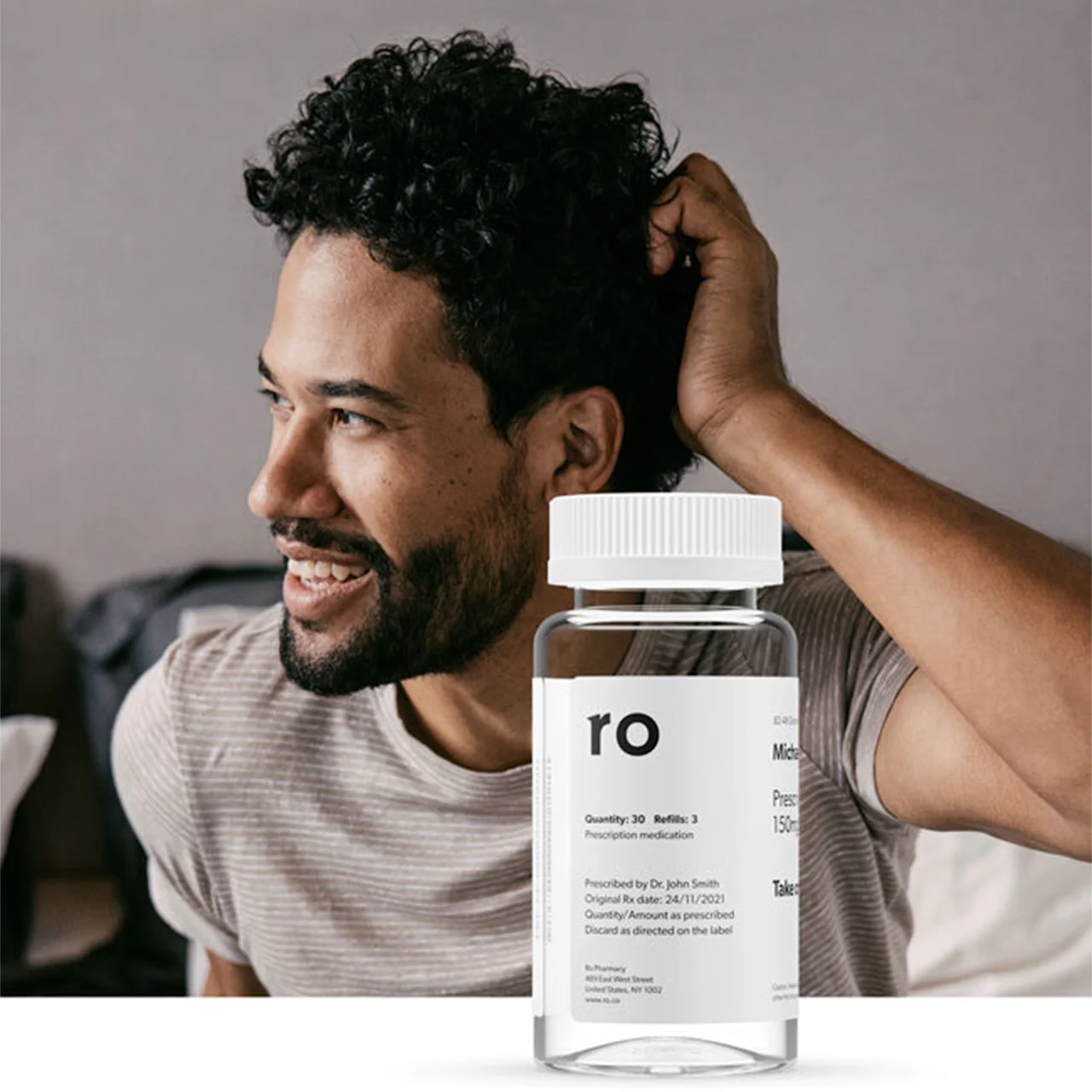Here's what we'll cover
Here's what we'll cover
Here's what we'll cover
Rogaine (minoxidil) is a tried and true treatment for hair loss, but if you have sparse facial hair and you’re looking to get a fuller beard, you might have considered trying it on your face. We spoke with Dr. Yael Cooperman, M.D., about whether Rogaine can be used on your beard.
Oral Minoxidil Important Safety Information: Read more about serious warnings and safety info.
Can you use Rogaine (minoxidil) on your beard?
If you read the packaging insert for Rogaine, you’ll find out that minoxidil––the active ingredient in Rogaine––isn’t typically meant to be put on your face. That said, there is evidence that putting it on your face will likely increase hair growth there. A small study done in people who put minoxidil foam on their faces showed increased facial hair growth compared to a placebo. Also, while the lower strength of minoxidil (2%) is often prescribed to women to treat hair loss, the higher dose typically prescribed to men (5%) is actually not recommended in women because it can cause sideburn hypertrichosis––which is just a fancy way of saying “hairy sideburns.”
In terms of whether the product is safe for use on your face, that’s another question. In general, the side effects of Rogaine are mild and typically include irritation in the area you apply it, but the skin on your face can be more sensitive than the skin on your scalp, potentially increasing the risk of those side effects. One thing to consider is that side effects can differ between the liquid minoxidil (typically available as a dropper or spray) and the foam. The liquid formulation often contains propylene glycol which is a common skin irritant which might make the foam a better option.
One final consideration is why you’d like to use Rogaine on your face. If you had a full beard that is suddenly patchy, facial hair loss could indicate an underlying condition such as alopecia areata, which typically does not respond to medications like minoxidil. On the other hand, if you’ve never had as much facial hair as you’d like, it might work. Either way, the first step is to check in with your healthcare provider who can give you some guidance, evaluate your circumstances, and make a recommendation that works for you.
DISCLAIMER
If you have any medical questions or concerns, please talk to your healthcare provider. The articles on Health Guide are underpinned by peer-reviewed research and information drawn from medical societies and governmental agencies. However, they are not a substitute for professional medical advice, diagnosis, or treatment.
References
Ingprasert, S., Tanglertsampan, C., Tangphianphan, N., & Reanmanee, C. (2016). Efficacy and safety of minoxidil 3% lotion for beard enhancement: A randomized, double-masked, placebo-controlled study. The Journal of Dermatology, 43(8), 968–969. https://doi.org/10.1111/1346-8138.13312. Retrieved from https://onlinelibrary.wiley.com/doi/10.1111/1346-8138.13312
Patel, P., Nessel, T. A., & Kumar, D. D. (2023). Minoxidil. StatPearls. Retrieved from https://www.ncbi.nlm.nih.gov/books/NBK482378/










